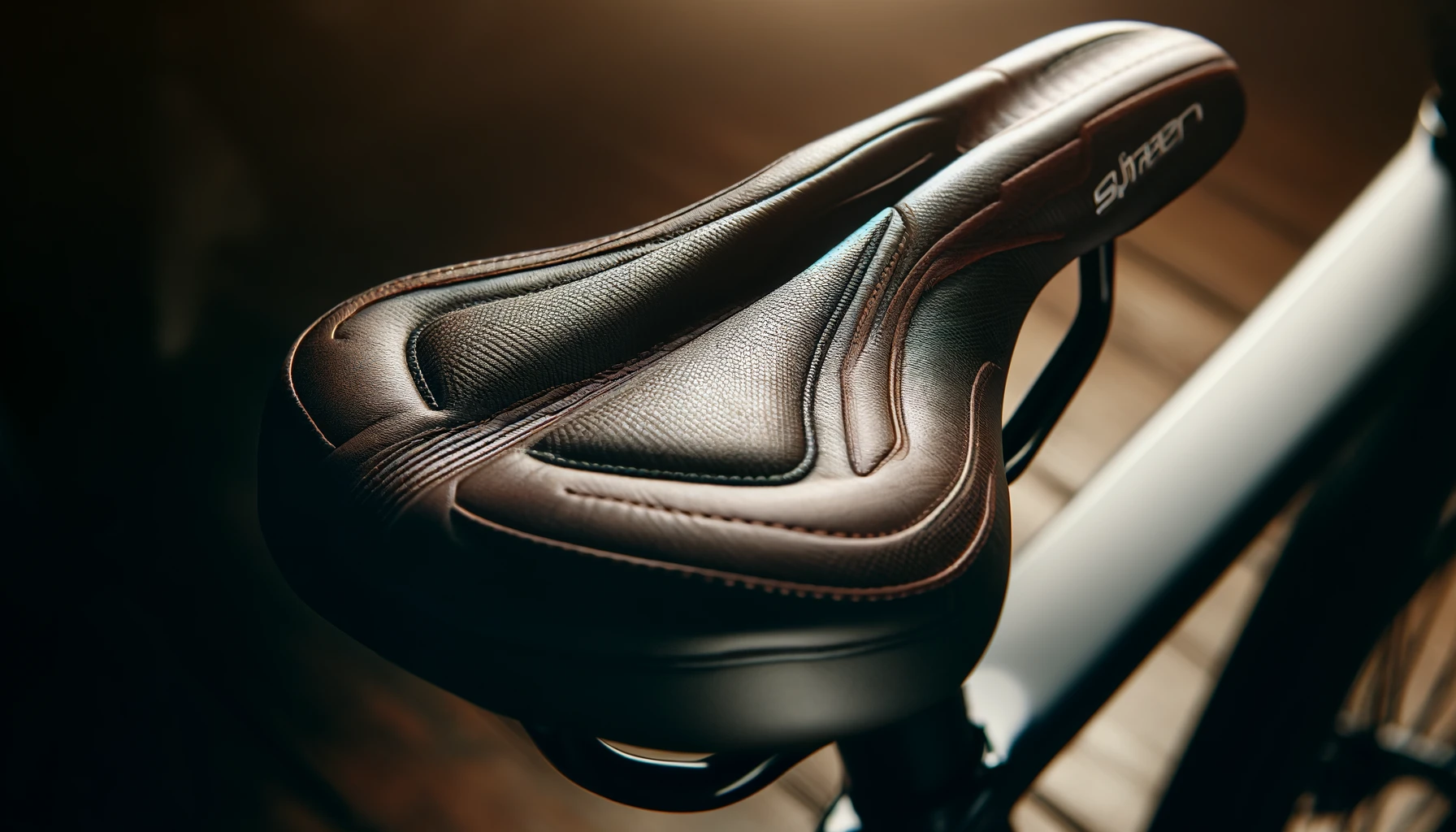Bicycle saddle tilt might seem like a minor detail, but it holds the power to transform your riding experience. Finding the ideal angle for your saddle is not just about comfort; it’s about enhancing your overall performance, reducing the risk of injury, and increasing your enjoyment on the bike.
Whether you’re a seasoned road racer, a weekend warrior on mountain trails, or a commuter navigating the urban jungle, the right saddle tilt can make a significant difference in how you feel during and after your ride. This article delves into why saddle tilt is crucial and how minor adjustments can lead to major improvements in your cycling.
By understanding the nuances of saddle positioning, you can tailor your bike to better suit your body’s mechanics and riding style. Keep reading to discover how to achieve the perfect balance, ensuring every pedal stroke is both powerful and pain-free. This isn’t just about setting up your bike; it’s about setting up for success on every ride.

Image Source: Image Generated With DALL-E on ChatGPT
Differences Between Road and Mountain Bike Saddles
Road bike saddles and mountain bike saddles are designed with specific features to suit their respective cycling disciplines. Road bike saddles are typically narrower and lighter, aimed at reducing weight and improving speed for long-distance rides on smooth surfaces.
They often have minimal padding to accommodate the cyclist’s forward-leaning position. Conversely, mountain bike saddles are generally wider with more padding to provide comfort and better control during off-road cycling, where the terrain is rough and riders encounter more bumps and jumps.
Tips for Choosing Between Road and Mountain Bike Saddles:
- Identify Your Riding Style: Determine whether you primarily ride on roads or trails.
- Consider Saddle Width: Road saddles are narrower; mountain saddles are wider.
- Assess Padding Needs: More padding for mountain biking, less for road cycling.
- Check Materials: Look for durable materials suited to your type of riding.
- Try Before You Buy: If possible, test different saddles to find the one that feels the most comfortable for your riding style.
Impact of Saddle Tilt on Cycling Performance
The tilt of a saddle can significantly impact a cyclist’s performance and comfort. An optimal saddle tilt ensures that the rider’s weight is properly distributed, which can reduce strain on the lower back and prevent discomfort in the pelvic area.
A neutral tilt is generally recommended, where the saddle is level with the ground, allowing for even distribution of weight and efficient pedaling. However, slight adjustments might be necessary based on personal comfort and riding style.
Steps to Optimize Saddle Tilt for Enhanced Cycling Performance:
- Start with a Neutral Position: Ensure your saddle is level from front to back.
- Adjust Based on Discomfort: If you experience discomfort, adjust the tilt slightly.
- Use a Level Tool: For precision, use a tool to check that your saddle is truly horizontal.
- Consider Your Riding Style: Adjustments might differ for road cycling versus mountain biking.
- Evaluate Performance: Regularly assess if the saddle tilt is helping or hindering your riding efficiency.
Recommended Saddle Adjustments for Different Cycling Disciplines
Saddle adjustments can vary significantly across different cycling disciplines to optimize performance, comfort, and efficiency. For road cycling, the saddle is generally set higher and tilted slightly forward to facilitate an aerodynamic position. In contrast, mountain biking requires a slightly lower saddle to enhance stability and control on uneven terrains.
Track cycling often uses a very rigid and slightly higher saddle position to maximize power output in a very controlled environment. Lastly, for casual or commuter cycling, comfort is prioritized with a more upright position and a well-padded saddle.
Tips for Saddle Adjustment Across Cycling Disciplines:
- Road Cycling: Higher and slightly forward tilt for aerodynamics.
- Mountain Biking: Lower position for better control over rough terrain.
- Track Cycling: High and rigid setup for optimal power during sprints.
- Commuter Cycling: Comfortable height and more padding for daily use.
- Fine-tuning: Always fine-tune adjustments based on personal comfort and specific needs.
Tips for Correctly Measuring Saddle Tilt
Measuring saddle tilt accurately is crucial for achieving optimal comfort and performance while cycling. The correct tilt can prevent unnecessary strain on the hips, knees, and back, and can affect overall cycling efficiency.
To measure saddle tilt, you will need a digital level or a smartphone with a leveling app. Place the device on the saddle and adjust the tilt to achieve a level position, or according to your specific comfort needs and riding style. Small adjustments can make a significant difference, so it’s important to test and tweak as needed.
Steps to Measure Saddle Tilt Correctly:
- Use the Right Tools: Employ a digital level or a leveling app on your smartphone.
- Place on the Saddle: Position the device in the middle of the saddle for accuracy.
- Check for Levelness: Adjust the saddle to achieve a level or desired tilt.
- Make Incremental Adjustments: Small changes can significantly affect comfort; adjust gradually.
- Test Ride: After adjusting, go for a test ride to ensure the tilt is comfortable for your riding style.
- Reevaluate Regularly: Check and adjust the tilt periodically as needed.
How to Adjust the Saddle to Prevent Injuries
Adjusting the saddle properly is key to preventing injuries while cycling, as an improper setup can lead to issues such as knee pain, lower back pain, and saddle sores. The height of the saddle should be set so that when the pedal is at its lowest point, the rider’s knee is slightly bent, not fully extended.
This position helps in avoiding strain on the knees and ensures efficient power transfer during pedaling. The fore and aft position of the saddle also plays a crucial role; it should be positioned so that when the pedals are horizontal, the forward knee is directly over the pedal spindle. This alignment helps in maintaining an optimal riding posture and reduces the risk of joint and back injuries.
In addition to height and fore-aft adjustments, the angle of the saddle should be considered as well. A saddle that is tilted too far forward can cause the rider to slide forward, putting excessive pressure on the hands, arms, and lower back.
Conversely, a saddle that is tilted too far back can increase pressure on the soft tissues of the pelvis and lead to discomfort or numbness. It’s important to start with a neutral angle, where the saddle is level, and make small adjustments as needed. This balanced position distributes the rider’s weight evenly across the sitting bones, which is crucial for long-term comfort and injury prevention.

Image Source: Image Generated With DALL-E on ChatGPT
Influence of Saddle Tilt on Long-Distance Cycling
The tilt of the saddle can greatly influence comfort and performance, especially on long-distance rides. A correctly tilted saddle ensures that the pressure is evenly distributed across the sitting bones, which is crucial for reducing discomfort during extended periods of cycling.
If the saddle is tilted too far forward, it can lead to excessive pressure on the pubic bone and soft tissues, causing numbness and pain that can significantly hamper a cyclist’s endurance and focus. On the other hand, a saddle tilted too far backward can shift too much weight onto the sit bones, leading to soreness and reduced pedal efficiency.
For long-distance cyclists, it is typically recommended to start with a neutral tilt and make adjustments based on personal comfort and the specific demands of their rides. As endurance rides often require prolonged periods of sitting, slight positive adjustments (tilting slightly forward) might be made to accommodate a more aggressive riding position and reduce strain on the arms and shoulders.
However, these adjustments should be minimal to avoid compromising blood flow or comfort. Regular testing and refinement during training rides are essential to dial in the perfect saddle position for long rides, ensuring both performance and injury prevention are optimized.
Frequently Asked Questions About the Ideal Bicycle Saddle Tilt
1. What is the optimal saddle tilt for comfort during long rides?
- For long rides, the saddle should be close to level or slightly tilted forward. This helps distribute your weight evenly across the sit bones and reduces pressure on sensitive areas. Adjustments should be minor to avoid straining the lower back or causing discomfort in the pelvic region.
2. How can I measure the tilt of my bicycle saddle accurately?
- To measure the tilt accurately, use a digital level placed on top of the saddle. Make sure the bike is on a flat surface when adjusting and measuring. Start with a level position and adjust slightly as needed, based on your comfort and riding style.
3. Will the ideal saddle tilt be the same for every cyclist?
- No, the ideal saddle tilt varies from one cyclist to another based on factors like body geometry, riding style, and personal comfort. What works for one rider may not be suitable for another, making it important to personalize this setting.
4. Can incorrect saddle tilt lead to long-term injuries?
- Yes, incorrect saddle tilt can lead to chronic discomfort and potential injuries over time, affecting areas such as the lower back, hips, and knees. It is crucial to address any discomfort early on by adjusting the saddle tilt to prevent such issues.
Determining the ideal saddle tilt is crucial for both comfort and performance in cycling. It’s not just about setting it once and forgetting it; regular adjustments and tuning based on feedback from your body are key.
A correctly tilted saddle supports your body efficiently, maintains proper alignment, and helps in preventing injuries, making your rides more enjoyable and effective. Always remember that individual preferences and physical needs play a significant role, so what works best for one cyclist may differ for another.
Regular experimentation and adjustment are the best ways to ensure that your saddle tilt perfectly matches your cycling needs.
Did you like the article? Be sure to check out more content like this in the Equipment And Accessories category, or see more related content below.






